20+ Luxury Trends to Be Aware of in 2025
With a new business year at our doorstep, entrepreneurs are advised to slowly start preparing for the upcoming twelve-month period. This is especially important for luxury clothing sellers as the high-end fashion market is known to be a place with great profitability but also fierce competition.
Having said that, in order to stay on top of their game, business owners need to keep pace with the fast-changing luxury industry by remaining cognizant of anticipated luxury trends.
Our research containing over 20 statistics related to this market segment covers all information you should have in mind, which will help you stay strategic with your business decisions all year round.
Here’s what you’ll learn about:
- Where does the retail market stand
- What position does the luxury market hold
- How much profit does selling fashion luxury goods generate
- Which marketing strategies have shown to be most effective
- What to take into account when reaching out to fashion suppliers
:format(webp)/https%3A%2F%2Fbrandsgateway.com%2Fapp%2Fuploads%2F2024%2F06%2Fbanner.jpg)
Looking for a reliable dropshipping or wholesale supplier?
Join us today for top-quality products and unbeatable prices.
General retail market trends
1. The global retail market is expected to reach over $22 trillion at the end of 2022. (Source: The Business Research Company)
The key point: The retail market is a never-ending growing industry, unlikely to ever shut down. Therefore, whether you’ve chosen to follow a traditional retail or eCommerce model, you have a great chance of successfully getting your fashion business going.
2. The worldwide retail e-commerce revenue is projected to surpass $6 trillion USD in 2023. (Source: Insider Intelligence)
The key point: Although running both brick-and-mortar and online retail stores has shown to be profitable, with the world slowly getting digitilized, customers have been showing more and more interest in online shopping, which in turn has made eCommerce stores the primary choice for many entrepreneurs.
3. In 2023 up to 17% of U.S. B2B sales are projected to be generated digitally and reach $1.8 trillion USD in profit. (Source: Statista)
The key point: In other words, B2B buyers, such as yourself, appear to prefer buying products for their retail stores remotely rather than meeting physically with their suppliers. Having said that, it’s important to reach out to B2B companies offering these services, such as BrandsGateway.
4. In four years’ time, the online B2B market will rise to $20.9 trillion USD, expanding by 17.5% between 2020 and 2027. (Source: GlobeNewsWire)
The key point: Taking into reference the previous statistic as well, eCommerce B2B sales are likely to start dominating the market by 2027, with in-person storage purchasing becoming more rare.
5. Around 30% of online retailers have been reported to use dropshipping as their primary method to secure store inventory. (Source: BlueCart)
The key point: A substantial amount of retailers are building their stores on the dropshipping method mainly because of the benefits of dropshipping and the indefinite number of conveniences this model brings to companies.
General luxury market trends
6. The personal luxury goods industry has been globally valued at over $300 billion USD in the last year. (Source: PR Newswire)
The key point: Luxury goods have always held the title of highly valuable products, giving customers a certain status and boosting their self-confidence. Consequently, this market is continuously being valued at billions of dollars, thus, making luxury products most certainly one of the most profitable items to sell in your store.
7. In the period between 2023-2027, the luxury goods market is given an estimated compound annual growth rate (CARG) of 4.73%. (Source: Expert Market Research)
The key point: With the luxury products market anticipated to experience a steady annual growth rate, store owners are encouraged to explore this segment and eventually introduce these items in their shops as they’re more than likely to bring them significant profits.
8. By 2025, around 25% of all luxury sales are expected to take place online. (Source: Statista)
The key point: With a quarter of luxury sales projected to happen online, if haven’t yet tapped into the eCommerce market, retailers are advised to look into opening retail virtual stores or even consider turning to dropshipping (check out these successful dropshipping fashion stores examples).
9. The sale of personal luxury items in the U.S. was set to reach close to $110 billion USD in 2022, with eCommerce sales making 22.7% of the total sales. (Source: Insider Intelligence)
The key point: To put it simply, the U.S. market of personal luxury items, such as apparel, accessories, jewelry, watches, and bags, generated a large amount of income in 2022, making the American market a ‘must’ when targeting an international audience. Moreover, with eCommerce sales spiking by 22.7%, the U.S. is undoubtedly one of the best countries to dropship to.
Fashion luxury market trends
10. In 2023 global sales of luxury fashion products are roughly calculated to exceed $240 billion in revenue. (Source: Colliers)
The key point: Continue expanding your clothing luxury store as high-end fashion products are expected to keep reaching a broad customer base and experience immense sales growth in the years to come.
11. Luxury Fashion (apparel and footwear items) is this market’s largest segment, showing volume growth of over $97 billion USD in 2022 and is expected to keep increasing by 5.62% between 2022-2027.. (Source: Statista)
The key point: Considering the fact that luxury fashion is the highest-earning segment of the luxury industry, focus on increasing your store’s apparel and footwear collections by diversifying your product catalog and including both currently trending and unique articles of clothing.
12. Luxury Watches and Jewelry is the second best-selling market section, earning a revenue of $67.97 billion USD in 2022 with an annual growth prediction of 4.11% until 2027. (Source: Statista)
The key point: Besides the apparel section, the watches and jewelry category is another section of your store that should be a focal point of your selling strategy and a priority when aiming for a good inventory turnover ratio.
13. The luxury sector of the fashion market is predicted to grow 2-4% on a global level in 2024, experiencing 9-14% growth on the Chinese market, 3-8% on the European market, and 5-10% in the U.S. (Source: McKinsey)
The key point: Despite the U.S., the European continent is another promising location for selling high-end luxury apparel and accessories as well as finding reliable European wholesale clothing suppliers. Additionally, the Chinese market can be a good option for reverse dropshipping.
14. Fashion categories lingerie, outerwear, loungewear, and accessories are reported to be mainly purchased via mobile devices which make up 69% of sales, while desktop purchases are accountable for only 30% of online sales. (Source: SaleCycle)
The key point: With such a high number of purchases happening via mobile devices, it wouldn’t hurt your business to create a mobile-optimized website as well so that you don’t miss out on any sale opportunities.
Marketing strategies trends
15. Fashion companies that choose to harness customer data in order to personalize customers’ experiences have been met with 30-50% growth in digital sales. (Source: McKinsey)
The key point: Collecting customer data is a foolproof way to execute powerful marketing and growth strategy because it enables you to personalize customer experiences, improve website content, and run customized clothing ads and fashion advertising campaigns.
16. Studies predict that in the U.S. social media video ad spending will climb up to $28.21 billion USD. (Source: Insider Intelligence)
The key point: Even though single-image social media ads are the most used ad form, with people constantly scrolling through reels and other types of short videos, especially those on TikTok, video ads are slowly becoming the new go-to choice for many entrepreneurs as it should for you too.
17. More than 80% of interviewed companies specializing in luxury goods, such as high-end clothing, have disclosed using social media channels Instagram and Facebook, with Instagram showing to be twice more effective than Facebook. (Source: The Home Trust)
The key point: Pay attention to developing your Instagram and Facebook business accounts so you can not only run ads on them but also be able to build close relationships with your customers.
Luxury shoppers trends
18. Gen Z and Millennials are expected to become dominating customers in the luxury goods market, contributing to approximately 50% of all luxury sales by 2025. (Source: Bain & Company)
The key point: Pay closer attention to targeting Gen Z and Millenial audiences. Since both generations were born in the tech world, start investing more effort in suitable marketing strategies: staying active on social media, creating engagement interactive posts, and taking advantage of influencer marketing, to name a few.
19. As a result, the luxury market’s consumer base is projected to grow from the current 400 million to 500 million buyers by 2030. (Source: Bain & Company)
The key point: Having this number in mind, you’ll be able to keep expanding your fashion business, broadening your target audience, and tapping into multiple markets in the near future.
20. A study conducted on U.S. luxury buyers reports that the main factors that drove these customers to purchase luxury products are high-quality materials (64%), brand name (52%), longevity and built to last (50%), authenticity (48%), and exclusivity (39%). (Source: Klarna)
The key point: The factors above are the main reasons why the majority of luxury shoppers across the world turn to luxury items. That being the case, by selling high-end fashion products, you have much higher chances of transforming casual buyers into loyal clientele.
21. The same study further claims that watches and jewelry (bought by 49% of respondents) and fashion (bought by 47% of respondents) are the most purchased luxury categories. (Source: Klarna)
The key point: As already confirmed by previous statistics discussed in the article, having apparel items, watches, and jewelry pieces in your store are likely to bring you guaranteed sales.
Staying one step forward is important
It’s crucial to catch up on luxury trends as they can help you out in laying the groundwork for new business plans suitable to the new market changes expected in the months to come. The statistics we’ve provided you with will guide you through important information you should consider when preparing your fashion store for the upcoming 2025. That being the case, be sure that you’ll be ready to tackle another business year and execute all strategies as planned.
Related articles
Our clients' success stories speak volumes about the impact BrandsGateway has had on their businesses.
View More Articles








:format(webp)/https%3A%2F%2Fbrandsgateway.com%2Fapp%2Fuploads%2F2024%2F07%2FScreenshot_20240618_140550_Gallery.jpg)
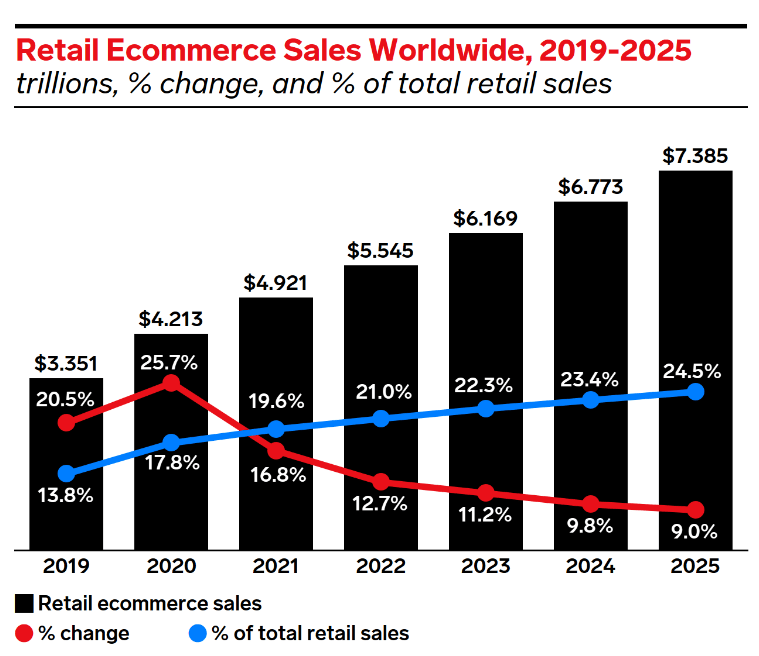
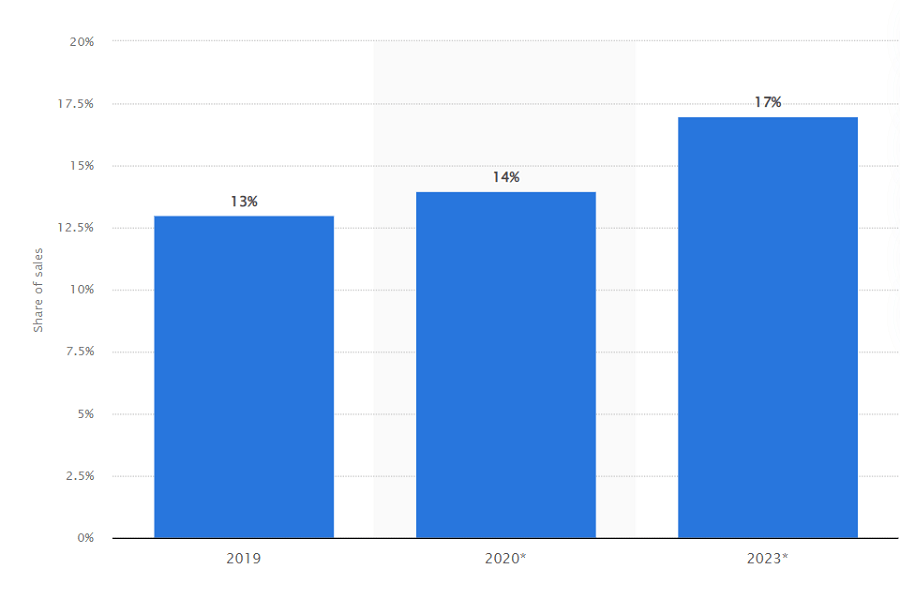
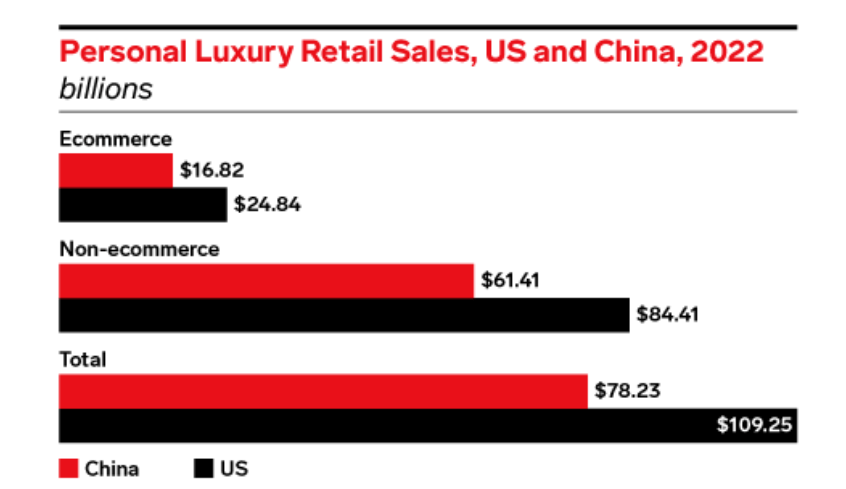
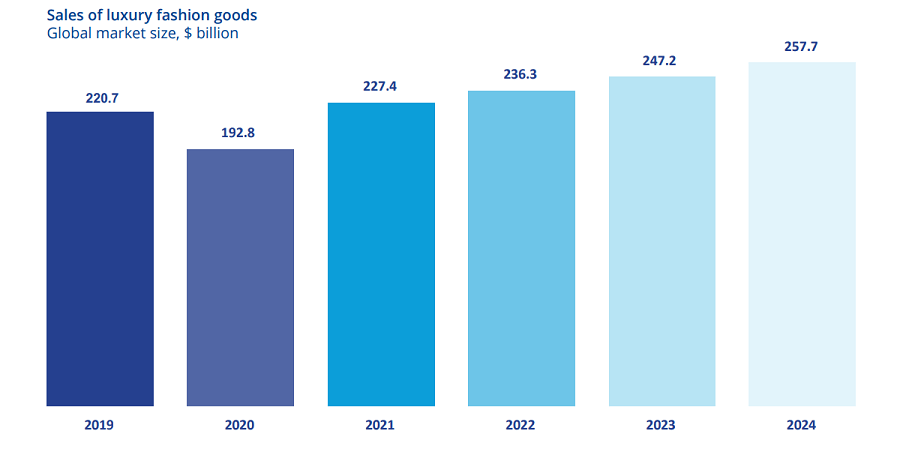
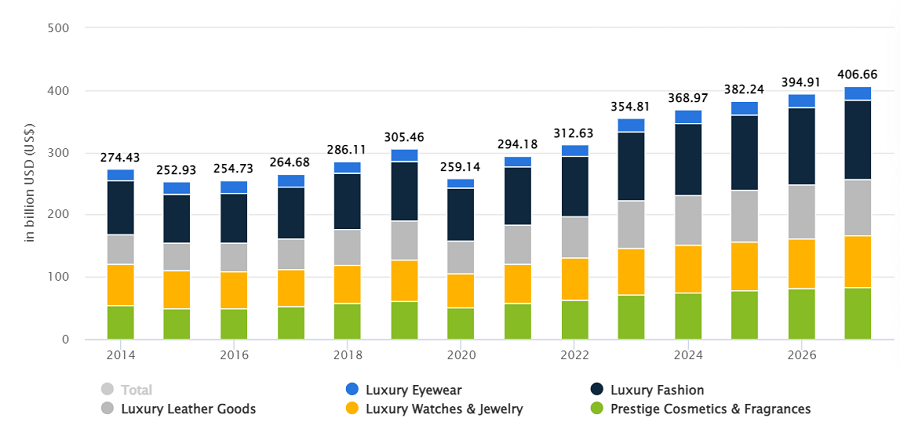
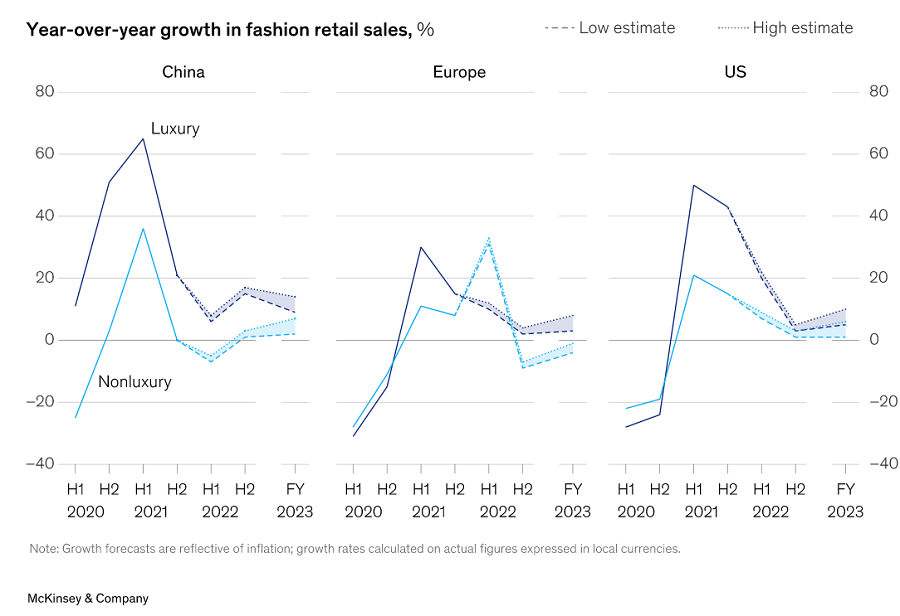
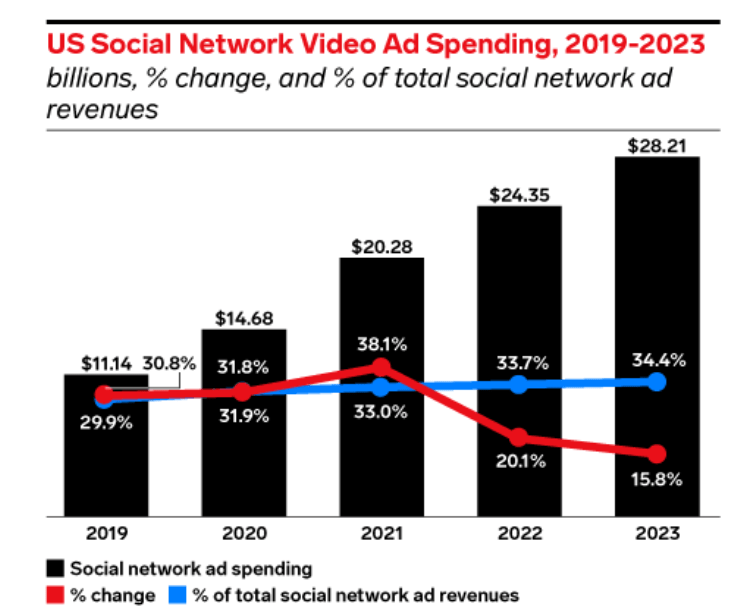
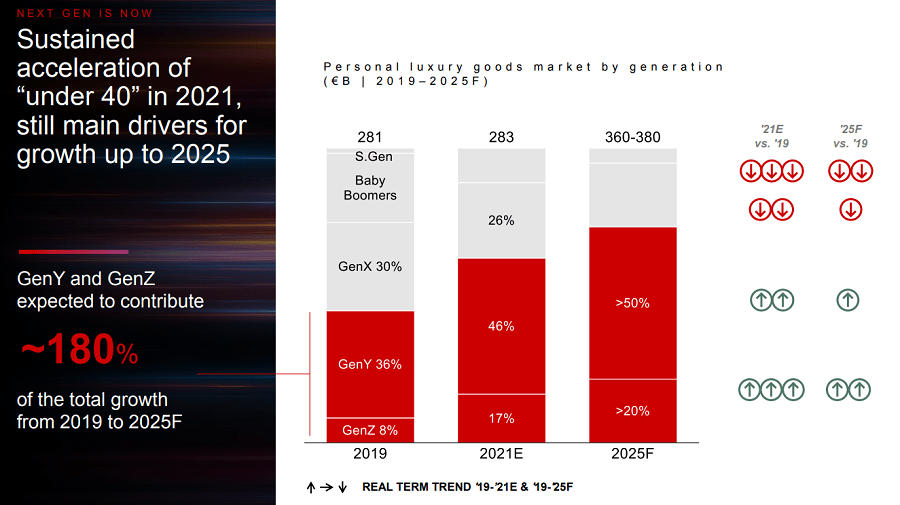
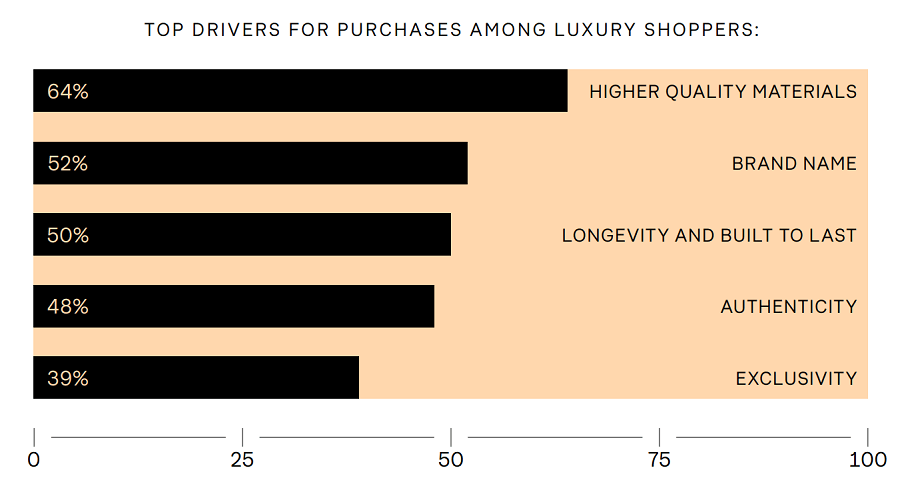
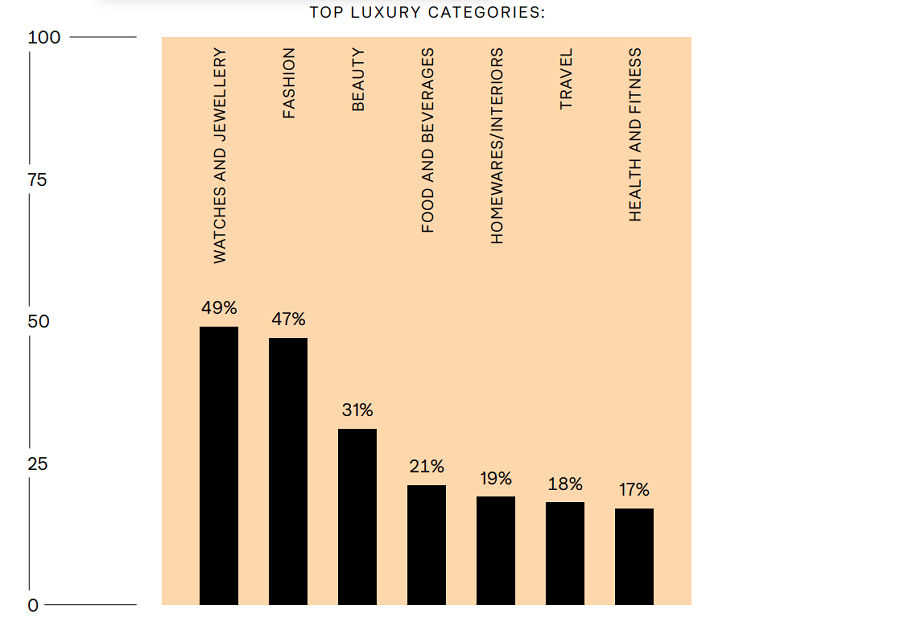
:format(webp)/https%3A%2F%2Fbrandsgateway.com%2Fapp%2Fuploads%2F2024%2F09%2Fluxury-goods.png)
:format(webp)/https%3A%2F%2Fbrandsgateway.com%2Fapp%2Fuploads%2F2025%2F01%2Fboost-sales-scaled.jpg)
:format(webp)/https%3A%2F%2Fprod-brandsgateway-images.s3.fr-par.scw.cloud%2F2021%2F01%2Feuropean-dropshipping-suppliers-e9168fe5-4b0.jpg)
:format(webp)/https%3A%2F%2Fbrandsgateway.com%2Fapp%2Fuploads%2F2024%2F09%2Fluxury-fashion-marketing.png)
:format(webp)/https%3A%2F%2Fprod-brandsgateway-images.s3.fr-par.scw.cloud%2F2021%2F11%2Fwholesale-clothing-suppliers-canada-06e3c195-5fb.jpg)
:format(webp)/https%3A%2F%2Fprod-brandsgateway-images.s3.fr-par.scw.cloud%2F2020%2F06%2Fdropshipping-suppliers-canada-222148f0-f12.jpg)
:format(webp)/https%3A%2F%2Fprod-img.s3.fr-par.scw.cloud%2F2024%2F05%2Fluxury-fashion-brands-0f5c2251-d0c.png)
:format(webp)/https%3A%2F%2Fprod-brandsgateway-images.s3.fr-par.scw.cloud%2F2022%2F02%2Fwholesale-supplier-faq-aa544142-597.jpg)